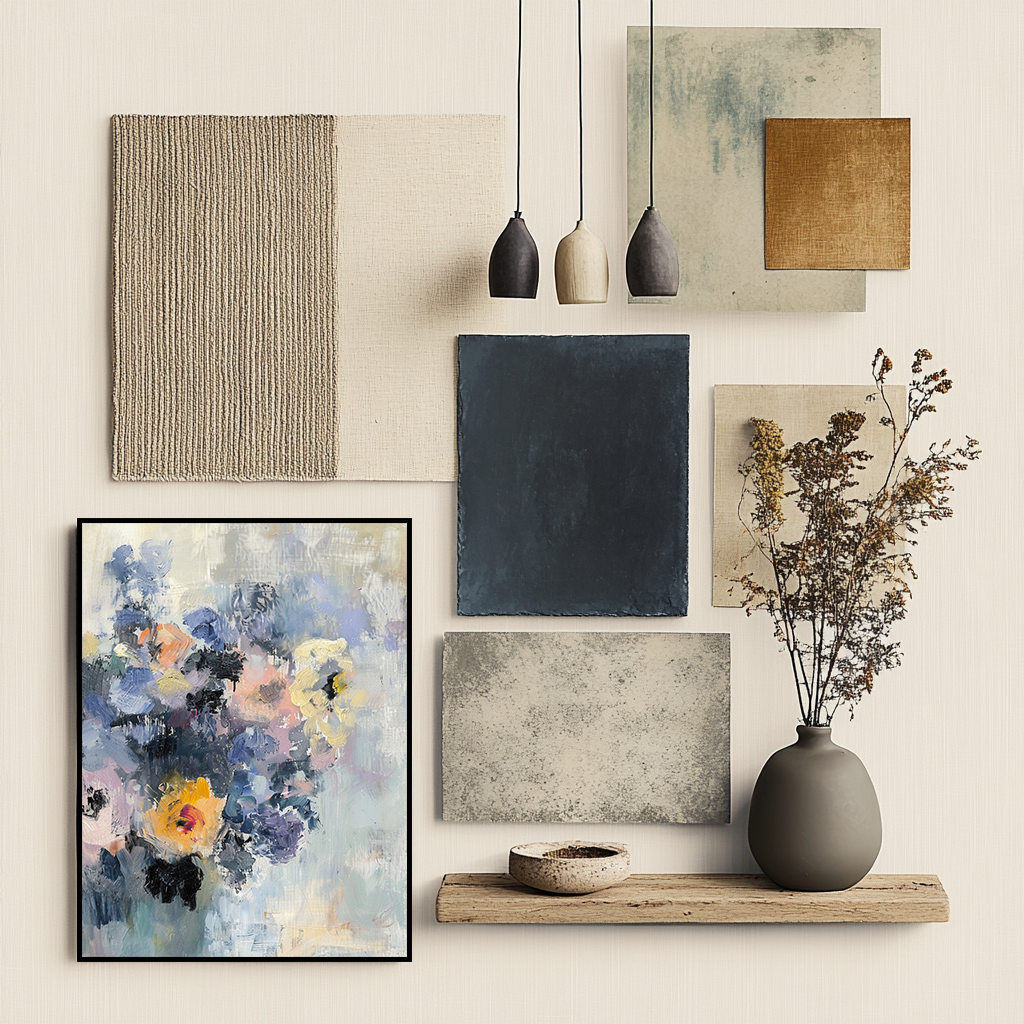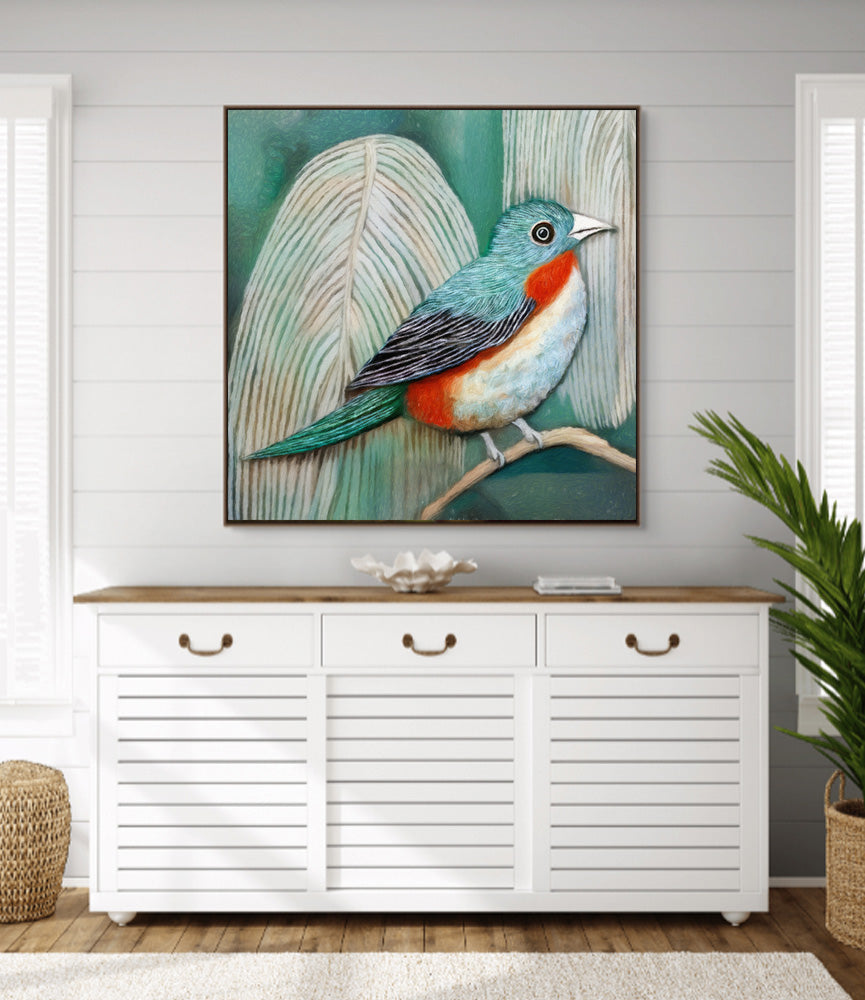Wall art is more than just a decorative element; it plays a pivotal role in shaping the atmosphere, character, and emotional tone of a space. Whether in a living room, bedroom, office, or hallway, the right wall piece can elevate a room’s design, provide a focal point, and express the personality and values of its inhabitants. However, selecting the perfect artwork for a given space can be a nuanced process. Factors such as the room’s function, size, color palette, and style must all be considered to ensure the art complements the environment. This research delves into the art of choosing the right wall piece, offering expert insights and strategies to help individuals make informed, impactful decisions when curating art for any space.
The Psychological Power of Wall Art
Before diving into the specifics of choosing wall art, it's essential to understand its psychological impact. Art has the unique ability to influence mood, provoke thought, and evoke emotions. The right piece can evoke a sense of calm, inspire creativity, or create a feeling of coziness or grandeur. This power is why wall art can be so transformative in interior design—it's not just a decoration but a catalyst for the emotional ambiance of the room.
Key Considerations:
· Mood Setting: Bright, vibrant art can energize a space, while calm, muted tones may bring a sense of tranquility. For example, a piece with rich reds or yellows can inject energy into a living room, while soft blues and greens can create a soothing atmosphere in a bedroom or bathroom.
· Emotional Connection: Art can reflect personal history, values, or experiences. A custom portrait or a piece that resonates with an individual’s interests fosters a deeper emotional connection with the space, enhancing its personal significance.
Match Art to the Room’s Function
The function of a room should guide the selection of wall art. Whether the space is intended for relaxation, socialization, or work, the art should align with its purpose to enhance its effectiveness and contribute to the room's atmosphere.
Key Elements:
· Living Rooms: The living room is often the central gathering place in a home, and the artwork should reflect this. Large statement pieces or a collection of smaller artworks arranged in a gallery style can create a sense of unity or stimulate conversation. For social areas, art that evokes a warm and welcoming ambiance is ideal.
· Bedrooms: Since the bedroom is primarily a sanctuary for rest and relaxation, art should promote calm and serenity. Soft landscapes, abstract works with gentle color palettes, or nature-inspired prints are particularly effective in creating a peaceful environment.
· Offices: Wall art in a workspace should inspire productivity and focus. Abstract or geometric designs with subtle colors can enhance concentration, while art that speaks to personal passions or motivations can add a sense of individuality and drive to the office.
· Bathrooms and Hallways: While often overlooked, these spaces benefit from smaller, more playful art pieces that add personality and charm without overwhelming the space. Nautical prints or abstract compositions are great options for bathrooms, while hallways can feature a series of smaller works in frames for visual interest.
Consider the Room’s Size and Scale
The size of both the room and the wall where the art will be displayed plays a critical role in determining the appropriate piece. An artwork that is too small can feel insignificant in a large room, while a piece that is too large may overpower a smaller space.
Key Elements:
· Large Rooms and Open Spaces: In spacious areas, such as living rooms or dining rooms, larger artworks or a series of smaller pieces arranged in a grid or gallery style can fill the space without feeling lost. Oversized paintings or sculptures act as focal points and help anchor the room’s design.
· Smaller Rooms: In more compact rooms, it’s essential to scale the artwork to avoid overwhelming the space. A single piece with a minimalist design can create a strong visual impact without taking up too much visual space. Additionally, mirrors or smaller, framed prints can help make the space appear larger while still adding personality and style.
· Proportion and Placement: When choosing art, consider the proportions of the wall. Large horizontal works can help fill wide, expansive walls, while vertical pieces work well on narrow walls. Art should generally be hung at eye level to ensure it is viewed at its best.
Harmonize Art with the Room’s Color Palette and Style
Wall art should complement or contrast with the existing color palette and overall style of the room. The artwork’s colors, style, and framing should either enhance the room’s design or act as a bold, intentional contrast to make a statement.
Key Elements:
· Color Harmony: The colors of the artwork should either blend seamlessly with the room’s color scheme or offer a striking contrast. For example, if the room features neutral tones such as whites, grays, or beiges, adding art with vibrant colors can create a visual focal point. On the other hand, art in complementary tones—such as warm earth tones for a rustic or Mediterranean interior—can unify the space.
· Complementing Interior Style: The style of the artwork should match or complement the room's overall design. For modern, minimalist interiors, abstract or geometric art works well. Classic interiors might benefit from traditional or vintage-style paintings, while industrial spaces could accommodate photography, black-and-white art, or mixed-media pieces.
· Framing and Materials: The frame of the artwork should reflect the room’s existing materials and style. A sleek, black frame may suit modern spaces, while ornate, gilded frames work better with traditional interiors. Consider materials such as wood, metal, or acrylic frames to complement the furnishings and finishes within the room.
Select Art That Reflects Personal Taste and Meaning
Finally, the most important factor when choosing wall art is ensuring it reflects the individual’s personal taste and values. Whether it’s a specific artist’s work, a favorite quote, or a piece that evokes a particular memory, the art should have meaning and resonate with the person who inhabits the space.
Key Elements:
· Personal Narratives: Art that tells a story or holds personal significance can add depth and character to a space. Whether it's a family portrait, travel photography, or a piece that reflects personal hobbies or interests, this kind of art connects the individual to their environment.
· Style Preferences: Art is an expression of personal style, and selecting pieces that align with an individual's taste is key to creating a cohesive environment. Whether the person favors bold, modern pieces or more traditional, classic artworks, selecting art that speaks to their aesthetic preferences ensures the space feels authentic and comfortable.
Summary
Choosing the perfect wall art for any space requires a thoughtful and strategic approach. By considering the function of the room, the size and scale of the space, the color palette, the style of the interior, and personal preferences, individuals can create an environment that is not only visually appealing but also emotionally resonant. Wall art has the unique power to elevate a room, foster connection, and express individuality, making it a crucial element in interior design. By carefully curating wall art with these expert strategies in mind, homeowners and designers can transform any space into a harmonious, inspiring, and meaningful environment.






